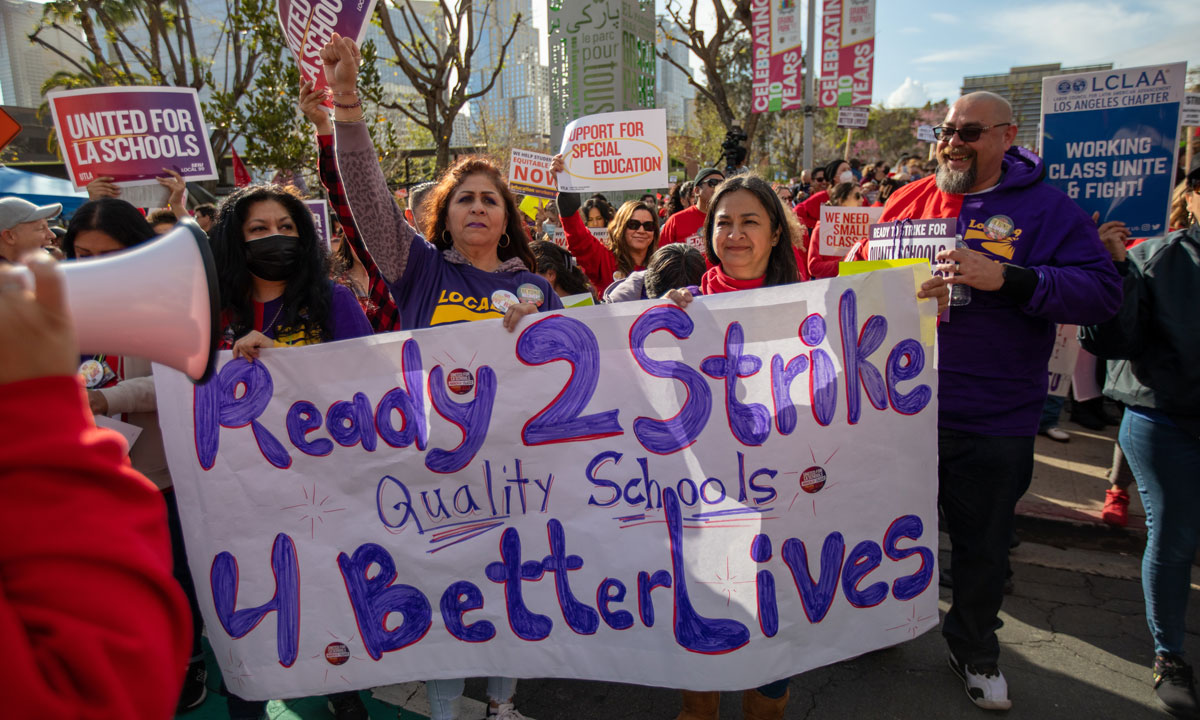As Schools Close for 3-Day Walkout, Could L.A. Strike Accelerate Learning Loss?
Antonucci: Unions are pushing back against Superintendent Carvalho adding 4 days to the school year to help students catch up after COVID

Get stories like this delivered straight to your inbox. Sign up for The 74 Newsletter
The vast majority of Los Angeles Unified School District employees will not be at work for most of this week, leading to the closure of schools. SEIU Local 99, which represents 30,000 support workers, called a strike because of what it calls unfair labor practices by the district. United Teachers Los Angeles, which represents 32,000 teachers, joined the job action in what it calls a solidarity strike.
The terminology is important, because a strike for economic reasons during contract negotiations has certain procedural requirements and time-consuming steps, including mediation and fact-finding. The two unions’ contracts also have no-strike provisions, which is why both notified the district they were terminating their expired contracts.
Superintendent Alberto Carvalho pledged to negotiate around the clock to avert the strike, then requested an injunction from the state labor relations board — all to no avail. The two unions had no inclination to call it off.
I believe the timing and length of the walkout is a calculated effort on the part of the unions not only to apply bargaining pressure to the district, but to undo Carvalho’s signature effort to address the effects of lengthy pandemic school closures: acceleration days.
In April 2022, Carvalho and the school board proposed adding four instructional days to the school calendar that would be optional for both students and teachers. Teachers who participated would receive additional pay, and students would receive additional instruction.
The teachers union filed an unfair labor practice complaint and called for a boycott of the first acceleration day, asserting that changes to the school calendar were a mandatory subject of collective bargaining.
After negotiations, the union agreed to the four days, to be held for two days each during winter and spring breaks. This didn’t please SEIU Local 99, which preferred the original plan of four Wednesdays spread throughout the school year.
The final two acceleration days are scheduled to be held April 3 and 4, but they are hardly acceleration days anymore, due to the unions’ decision to hold deceleration days this week.
Holding a strike on a Tuesday-Wednesday-Thursday almost certainly guarantees that a large number of students (and school employees) won’t show up Friday, either. There go your four days of additional instruction.
The district could add make-up days to the calendar, but as UTLA reminded its members, “they will have to negotiate that with us as a union.”
The unions seem unperturbed by school closures of any sort. The teacher strike in 2019 closed schools for a week. Unions were largely responsible for in-person instruction being delayed until late August 2021. Both SEIU Local 99 and UTLA are ready for traditional, open-ended strikes unless significant raises and other demands are met.
As showing up at school has taken a backseat to other concerns among district employees, many students have followed suit. Enrollment has fallen dramatically, and chronic absenteeism continues to be a problem.
Teachers union President Cecily Myart-Cruz notoriously claimed, “There is no such thing as learning loss.” She’s wrong. The only thing kids learn from closed schools is that neither they, nor the schools, are important.
Mike Antonucci’s Union Report appears most Wednesdays; see the full archive.
Get stories like these delivered straight to your inbox. Sign up for The 74 Newsletter

;)